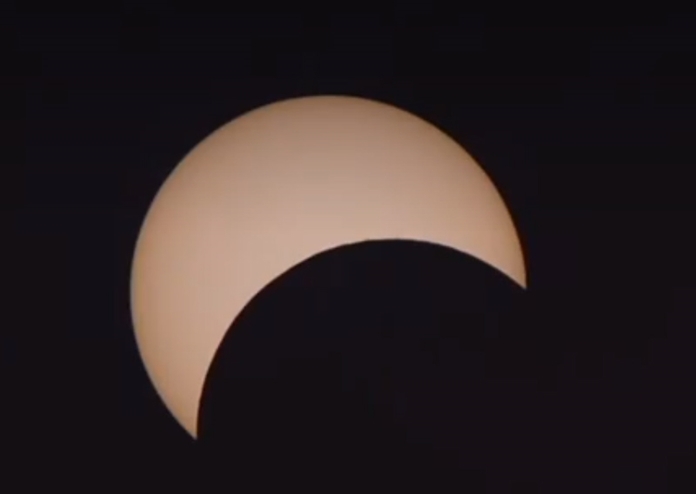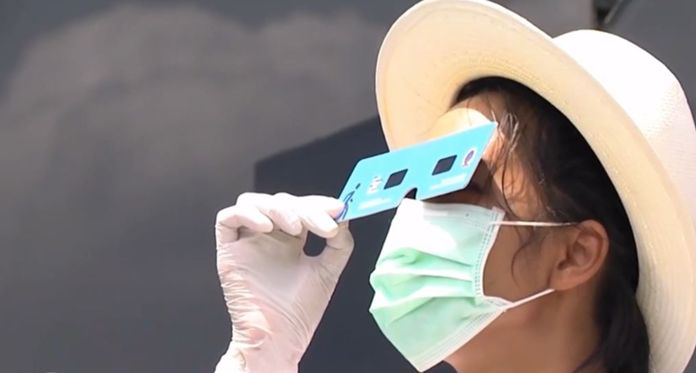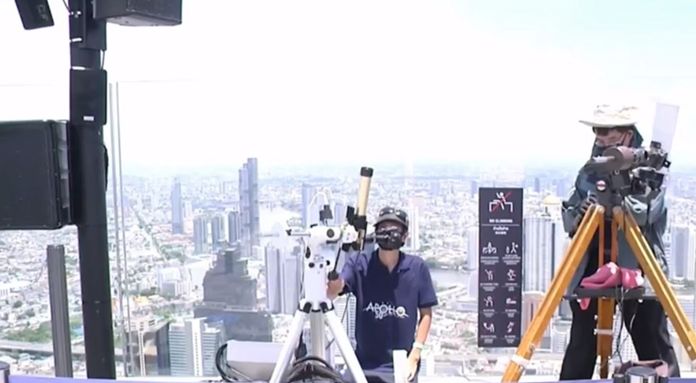
Sunday’s partial eclipse coincided with the longest day of the year, the summer solstice, when the sun appeared in the sky for almost 13 hours in Thailand.
The partial eclipse started at about 1 p.m. and continued until 4.10 p.m., with maximum coverage at about 2.49 p.m. The partial eclipse could be seen across Thailand with varying degrees of the sun appearing covered. In the southernmost district of Betong, only about 16 percent of the sun was covered, while Bangkok experienced about 40 percent of the sun obscured. In the northernmost district of Mae Sai however, about 63 percent of the sun was covered.
 People were warned against looking directly at the sun with the naked eye or even sunglasses. The safe way was to use a special device that had filter features such as sun glasses made from black polymer light filters, or use the principle of a pinhole camera. For a telescope, it had to be equipped with a sun light filter.
People were warned against looking directly at the sun with the naked eye or even sunglasses. The safe way was to use a special device that had filter features such as sun glasses made from black polymer light filters, or use the principle of a pinhole camera. For a telescope, it had to be equipped with a sun light filter.
People were also invited to follow a live feed via the Facebook page NARIT of the National Astronomical Research Institute of Thailand from the four regional observatories: Sirindhorn Astronomical Park, Mae Rim district, Chiang Mai province, and the observatories in Nakhon Ratchasima, Chachoengsao and Songkhla. Those who missed the phenomenon, will have to wait for seven years for the next solar eclipse, which will occur on August 2, 2027. (NNT)

 |
 |
 |





